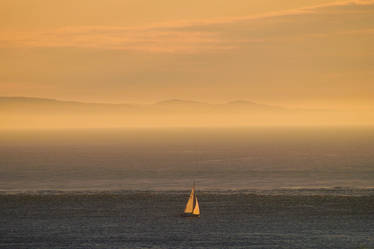In the image above, claremanson not only photographs something that looks enticingly delicious and creative, but she has additionally set the scene. She's made up the 'table' so to speak, so that it compliments and even enhances the Food that she's photographing. Looking carefully at your setting is a fantastic way of making your Food look good and unique. It's cheap too, just look at using glasses, sometimes with liquid in them, colourful tablecloths, napkins or any other items that might suit your image. Within cookery books these days, images that 'set the scene' are becoming increasingly more popular and widely used.
2) Play with your Food...
:bigthumb251731233:
Here, LADYW has not just made a 'salad' or an arrangement of food. She's looked carefully at how she can arrange her food in the most creative and complimentary way. Using shapes and colour to make something look good is a fantastic way of getting food shots that look different. Again, coupling that with the first pointer - setting the table - and you have something that looks fresh, vibrant and quite casual.
Black and white should not be avoided when photographing food. Just because a lot of the most popular images on dA within this area are bright, vibrant and elaborate pieces, it doesn't mean that going back to just two tones, is not good! Look carefully at your lighting, and even practice your images in black and white to teach you a bit more, before advancing into colour.
Shooting food in its natural environment or around earthy browns and greens that compliment its wholesome roots sometimes can really enhance an image. Of course this might be somewhat trickier with a McDonalds burger..but if you're shooting fruits or vegetables, consider taking them outside to make use of sunlight and natural backdrops.
Shooting whilst being on a level with your subject is the most traditional way of shooting still life. However it doesn't hurt to change the angle once in a while, and the focus. Shoot from above, the side, below or even at an obscure angle to create something a bit different.
Using Macro or even abstract techniques when shooting food is not a bad thing. You don't always have to show food in a specific setting with props scattered around it. Instead why not consider getting up close and zooming in, or using a macro lens, to capture a wider expanse of the same food item. It makes a difference, gives a bold statement and often forces people to step outside of their comfort zone.
Traditional still life images should still be drawn upon now as tools of inspiration and guidance for your creations. Go back to basics and look at how the pros did it in the 'olden' days and you might learn a trick or too. If anything it'll teach you that simplicity can be beautiful and non-elaborate pieces do work well.
Bokeh, the lovely effect of circular lighting behind an image, doesn't have to be created with a texture or an overlay after you've shot something. You can create your own. Consider using windows with raindrops sprayed on (not raining? Use spray bottle!) and some subtle lighting either man made or naturally with sunlight, to create your own Bokeh effect.
You don't have to edit your images, and it's great if you can achieve what you want first time. But there are some great techniques out there that you can apply after your photo is taken, that might enable to create something better. Selective colour is a popular one, using an editing tool to highlight just one or a few parts of an image in colour and make the rest black and white. Cropping is a typical editing function, exposure and white balance editing and contrast fiddling are also useful.
Putting a bit of humour into your work never hurt anyone! And you see it a lot on dA, eggs with faces, funny shaped vegetables and other such things. Adding just a touch of the 'funny' to your work can create an entirely different concept, even if you thought you'd originally messed up a piece.









